Are you considering French Polynesia as an alternative to Hawaii? While French Polynesia offers a stunning paradise beyond Hawaii, it comes with its own set of unique challenges. Our experiences as repeat travelers to French Polynesia may help you decide if “Tahiti” is the right choice.
Beat of Hawaii editors recently returned from a two-week stay on the island of Moorea and several nights in Papeete. After receiving hundreds of comments from visitors about this iconic Pacific destination, like the one below, we went with a keen eye to gather valuable insights.
“We tried Tahiti last year instead of Hawaii. It’s stunningly beautiful and the people were friendly (other than the airport workers—yikes). The language barrier was an issue for us because we do not speak French. I like the food in Hawaii better and the US currency is certainly easier. From California it was a longer flight, so Hawaii has that advantage (but)… Hawaii priced itself out of the market, in my opinion.”
–BOH commenter’s experience.
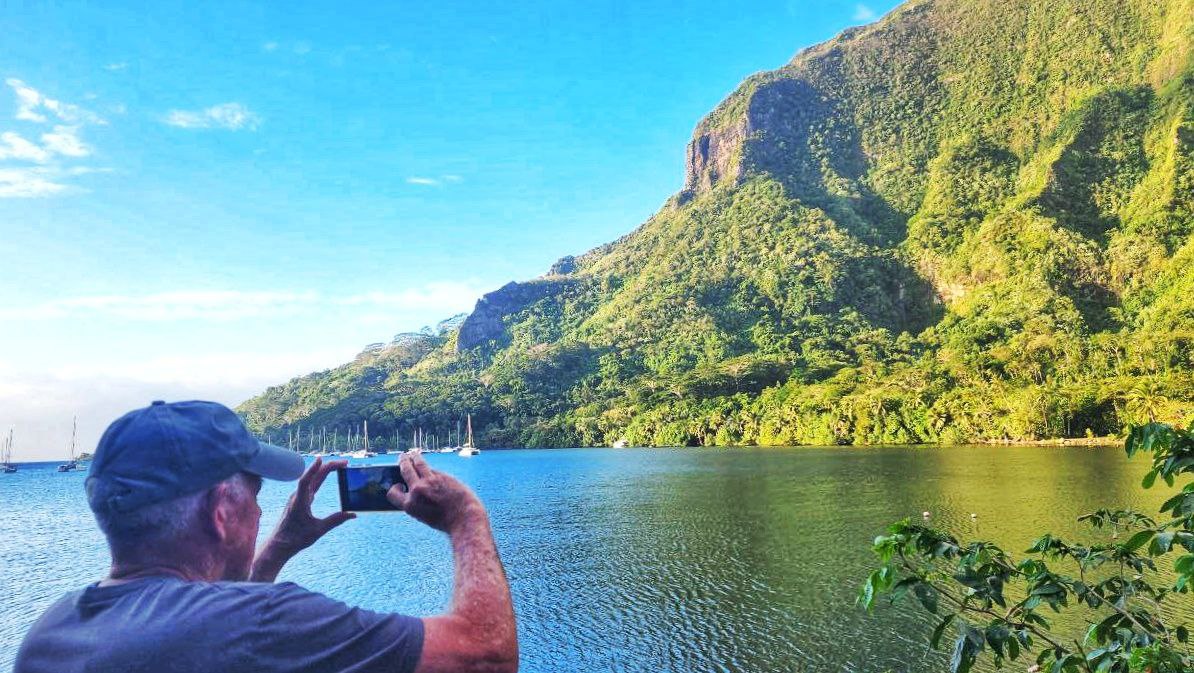

French Polynesia in a nutshell.
Located 2,500 miles directly south of Hawaii and sharing the same time zone, French Polynesia comprises 35 islands and 83 atolls. Though collectively, they could fit into the size of Delaware, these islands are scattered across a vast expanse of the South Pacific, covering an area as large as Europe.
Designated a French overseas territory in 1946, French Polynesia’s residents are French citizens, and the President of France serves as their Head of State.
Flying to Tahiti from Honolulu takes just under six hours, while the journey from Los Angeles takes over eight hours. The islands are also linked to Europe with daily flights from Paris.
Hawaii welcomes 10 million visitors annually. French Polynesia hosts under one-quarter million.
Those numbers speak volumes, and for many, that’s part of the appeal of French Polynesia. However, French Polynesia is not Hawaii, and understanding the significant differences between the two is essential to making the most of your trip.
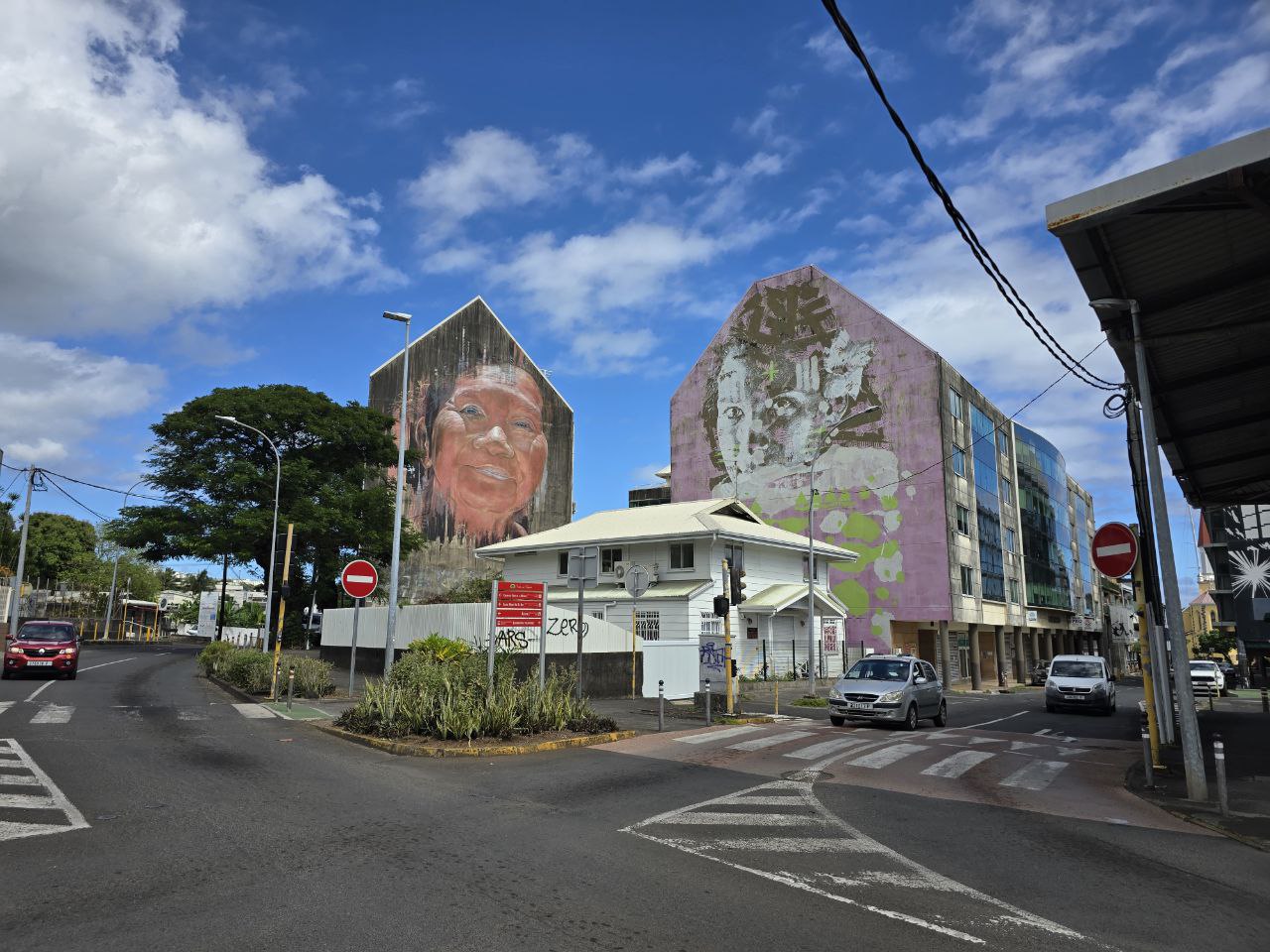

Papeete is an interesting city. The largest in the country, it has a population of 27,000. But, to truly experience it, you’ll need to venture off the main streets and away from the tourist areas. Most people spend a night at a hotel in Papeete before transferring on to one of the other islands. We stayed two nights.
French is the official language, and US residents need a passport to visit. While English is commonly spoken at resorts and in tourist areas, outside of these zones, it can be hit or miss depending on the island and situation. For us, the opportunity to speak and improve our French is one of the draws. If you’re not fluent, knowing a few French travel phrases can go a long way. And when in doubt, there’s always Google Translate. You’ll often hear “Bonjour” throughout the day, even when strangers greet you on the street, while “Iorana” serves as the Tahitian welcome greeting equivalent to “Aloha.”
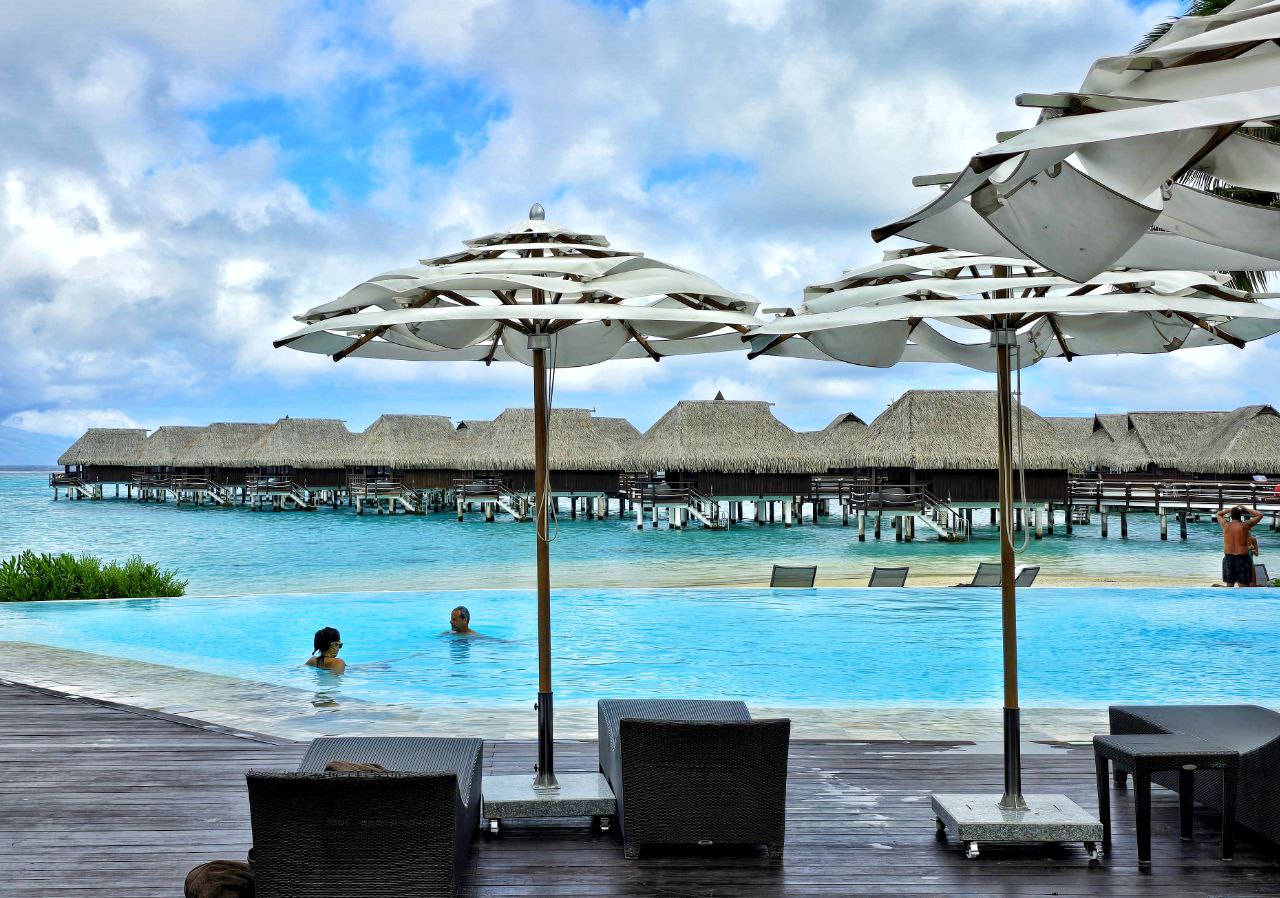

Resorts in French Polynesia, particularly overwater bungalows, are notoriously expensive. You can expect rates to range from $1,000 to many thousands of dollars per night. For those who prefer not to stay at a resort, embracing the local way of life can be especially appealing to adventure travelers. Our vacation rental was $125 a night but didn’t include services like a concierge, guide, or assistance. We also had to drive to the beach. If you prefer everything to be taken care of, be aware that opting for those conveniences can drive up costs—sometimes even more than in Hawaii.
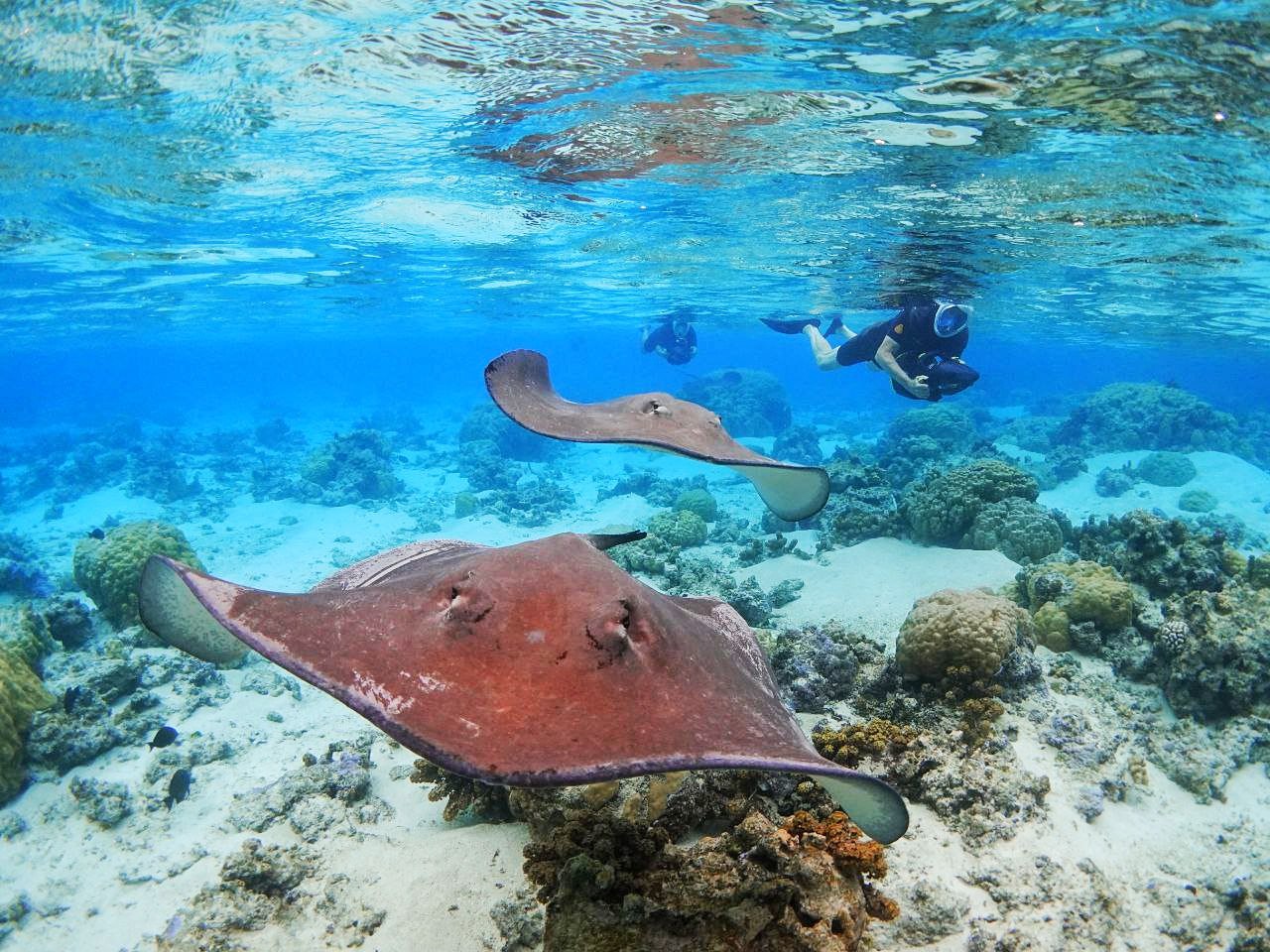

The lagoons of French Polynesia are truly unique. These expansive stretches of water lie between the coral reefs and the land, creating serene, sheltered waters. The Society Islands—Tahiti, Moorea, Raiatea, Tahaa, Huahine, Bora Bora, and Maupiti—are all surrounded by these picturesque lagoons, a feature that Hawaii does not have. The lagoons are teeming with vibrant tropical fish, and many beaches are adorned with soft, white sand.


The local currency in French Polynesia is the Franc Pacifique (CFP). A simple way to approximate the conversion to US dollars is to remove the last two digits. For example, 1,000 CFP is roughly equivalent to $10, and 20,000 CFP translates to about $200. While the exchange rate is slightly more favorable than the estimate, this quick method will give you a good reference point. You will need local currency, while just a few providers may accept US dollars.


Public beaches in French Polynesia can be surprisingly hard to come by. On Moorea, for instance, only three public beaches are spread across the island. This stands in stark contrast to Hawaii, where all beaches are public, and most have easy public access. Imagine the popular Wailea beaches on Maui being accessible only to resort guests—that’s the reality on Moorea. The only way to access many other beaches would be by trespassing on private land, which is strictly prohibited and closely monitored.


Snorkeling in French Polynesia is truly exceptional. You’ll find crystal-clear waters that sparkle in the sunlight. If you love to snorkel or dive, you’ll find far more opportunities to encounter marine wildlife than in Hawaii. The ocean clarity is superior to Hawaii, with vibrant white sand and a strikingly unique shade of blue that sets these waters apart.
Sharks are a common sight in the waters of French Polynesia. That makes it a popular destination for shark enthusiasts. While attacks are rare, there have been instances of people being bitten if they venture too close. We encountered sharks while snorkeling, and chances are you will, too. In contrast, spotting a shark in Hawaii is a rare event that often results in beach closures. That’s not the case here. If you’re considering a trip to French Polynesia, it’s important to be prepared for regular encounters with sharks, rays, and other amazing wildlife in the lagoon.
There are no lifeguards on the beaches in French Polynesia, and water shoes are often needed. In Hawaii, many beaches are staffed with lifeguards, and most all have rescue tubes, but that’s not the case here. It’s always a good idea to swim or snorkel with a companion for safety. Another key difference is the need for water shoes, as many beaches are dotted with coral and rocks, even at the water’s edge. To find safer entry points, it’s helpful to watch where the locals go into the water.
Car rentals are pricey; there is no Uber, and taxis are expensive. Car rentals in French Polynesia are surprisingly expensive, especially compared to Hawaii. Many visitors skip renting a car altogether. If you decide to rent a car, booking well in advance is a good idea, as availability can also be limited, especially during peak travel seasons. We found the best rental car deals by contacting a local agent rather than going through the global car rental websites.
Public transportation is very limited to non-existent. We actually never saw any public transportation on this last trip, on either island we visited.
Hotels, activity providers, and even some restaurants often offer complimentary pick-up and drop-off services. This may seem unusual, but it is normal on Moorea and throughout Polynesia to ask for complimentary transportation to be provided.
Make sure to have cash on hand. Before leaving Papeete Airport, stop by the ATM inside the terminal, as taxi drivers typically don’t accept credit cards. We also found that some major activity providers and other smaller businesses operate on a cash-only basis. While grocery stores and resorts accept credit cards, many local businesses enforce a minimum charge for card payments, so it’s wise to carry cash for convenience. We used far more cash compared with Hawaii or Europe.
Limited business hours may surprise you. Unlike in Hawaii, where most businesses stay open daily, that’s not always the case in French Polynesia. In Papeete, the capital city, many businesses close at noon on Saturday and don’t reopen until Monday. On smaller islands like Moorea, some businesses aren’t open daily, and some close in the afternoon. It’s always a good idea to check operating hours in advance, as the more relaxed pace here may catch visitors off guard, especially those accustomed to Hawaii’s more round-the-clock availability.
Appearances can be deceiving. In French Polynesia, don’t judge a book by its cover. We visited the delightful Urban Café in Papeete, and while it looked like a dive from the outside, the interior was charming, and both the food and service were excellent. Keep this in mind as you explore—what may look like someone’s garage or patio could turn out to be a great dining spot. You might even find yourself buying T-shirts at someone’s house or fresh produce from a roadside table. In Polynesia, the charm often lies in the unexpected.
Be flexible and ready for challenges. Flexibility is key when visiting French Polynesia, as figuring things out isn’t always straightforward, like in Hawaii. For example, one of the few public beaches on Moorea closed early before sunset. Our solution? We parked on the road instead. After the gates locked, we enjoyed the sunset on the beach. To exit, we walked along the shore to the nearest hotel for a drink and returned to the car through the resort’s property.
The ferry system between Papeete and the outer islands can be challenging to navigate. You will find limited information available online about schedules. You’ll need to purchase tickets on the ground floor and leave your luggage there before heading upstairs to board the ferry—something that’s not immediately obvious to newcomers. On the return trip, you can leave your bags at a local bar if you need to store your luggage in Papeete for the day, as we did. The ferry between Papeete and Moorea takes about 40 minutes. The other islands take 3 to 6 hours to reach by boat, and the water can be rough depending on the season.
Mosquito disease concerns: Tahiti vs. Hawaii. In French Polynesia, there is a higher risk of diseases such as dengue fever, which are transmitted by mosquitoes. Outbreaks can occur, so taking precautions like using insect repellent, wearing long sleeves, and staying in accommodations with bed screens, screened windows, or air conditioning is important. In contrast, Hawaii has had minimal mosquito-borne disease concerns, although basic protection is still wise, especially in more tropical areas.
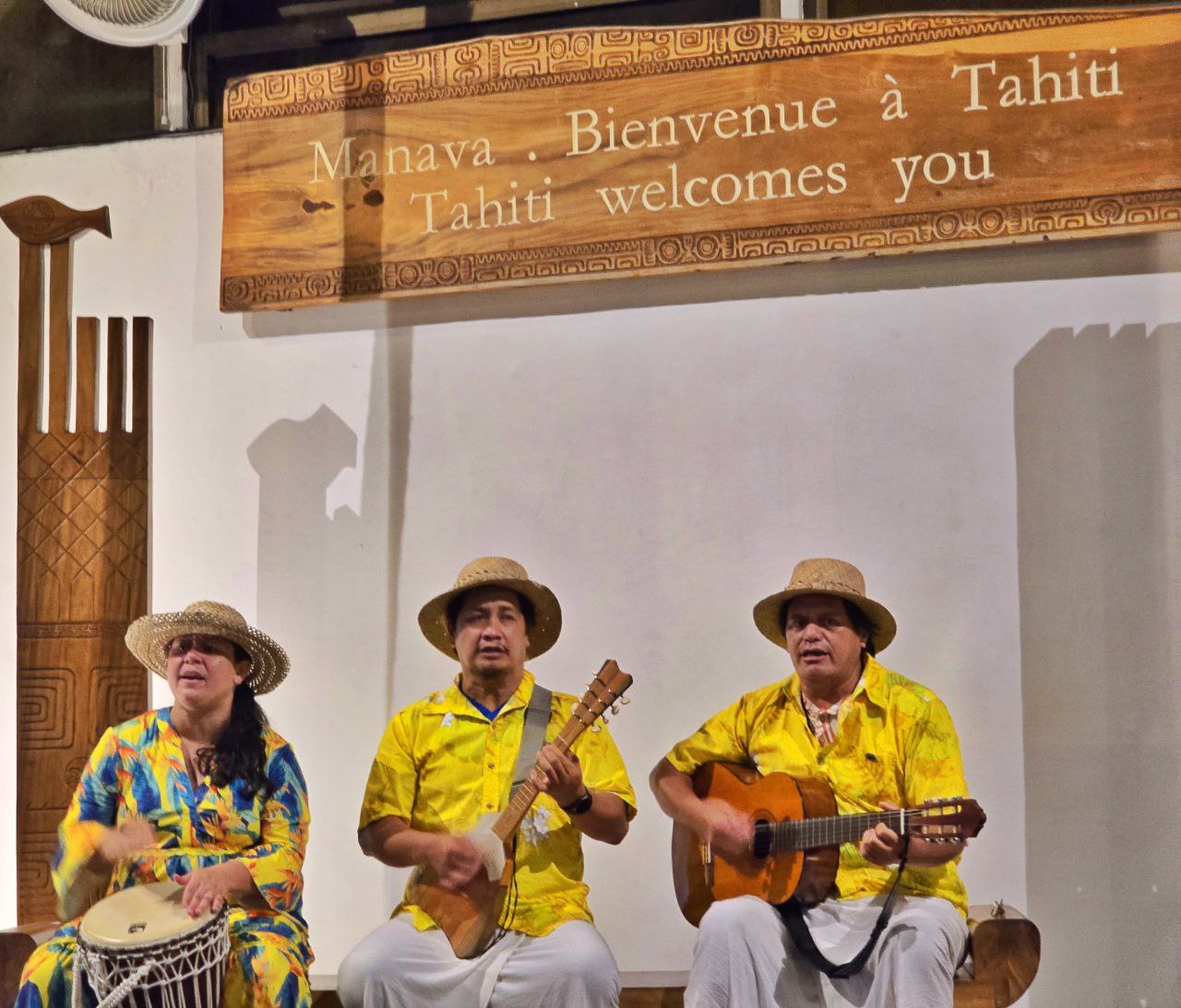

Airport and arrival procedures can be challenging. The arrival process in French Polynesia is quite different from that in Hawaii. It took us 90 minutes to get through customs and immigration, and before disembarking, we sat on the plane for 10 minutes while the cabin was sprayed with insecticide. That was because the flight originated in Hawaii, where there is the coconut rhinoceros beetle. The whole arrival experience wasn’t entirely unpleasant, also given the live music in the terminal, but it made for a long, hot day.
International flights all land at Faa’a Airport, located 3 miles from Papeete. The airport has seen significant improvements over the years and now looks much better, with most businesses located outside of security. This is crucial to remember for your flight home—be sure to shop and eat before passing through security, as options are limited afterward. And don’t expect air conditioning—there isn’t any.
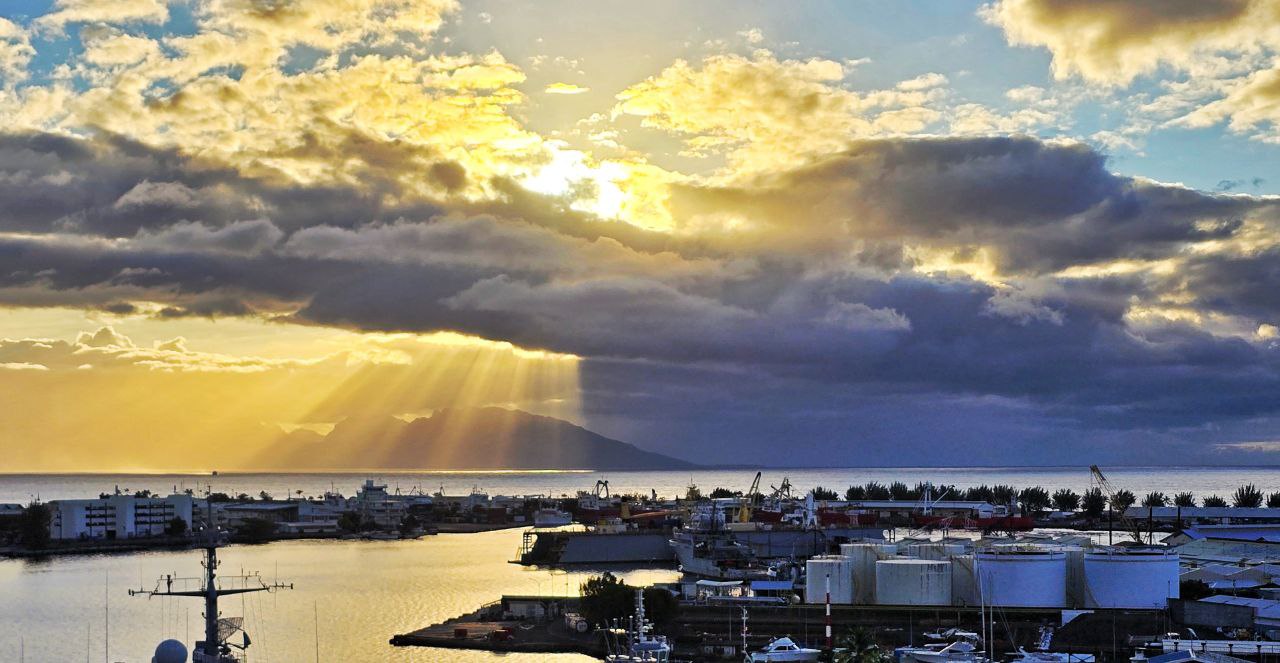

Some of our Tahiti favorites.
To save money, we opted for an Airbnb on Moorea, which was a great alternative to the pricier resorts. For our nights on Tahiti, we stayed at the new Kon Tiki Hotel, which offers a full kitchen for around $245 per night and features a popular rooftop bar with stunning views. The hotel is conveniently located right across from the large ferry terminal.
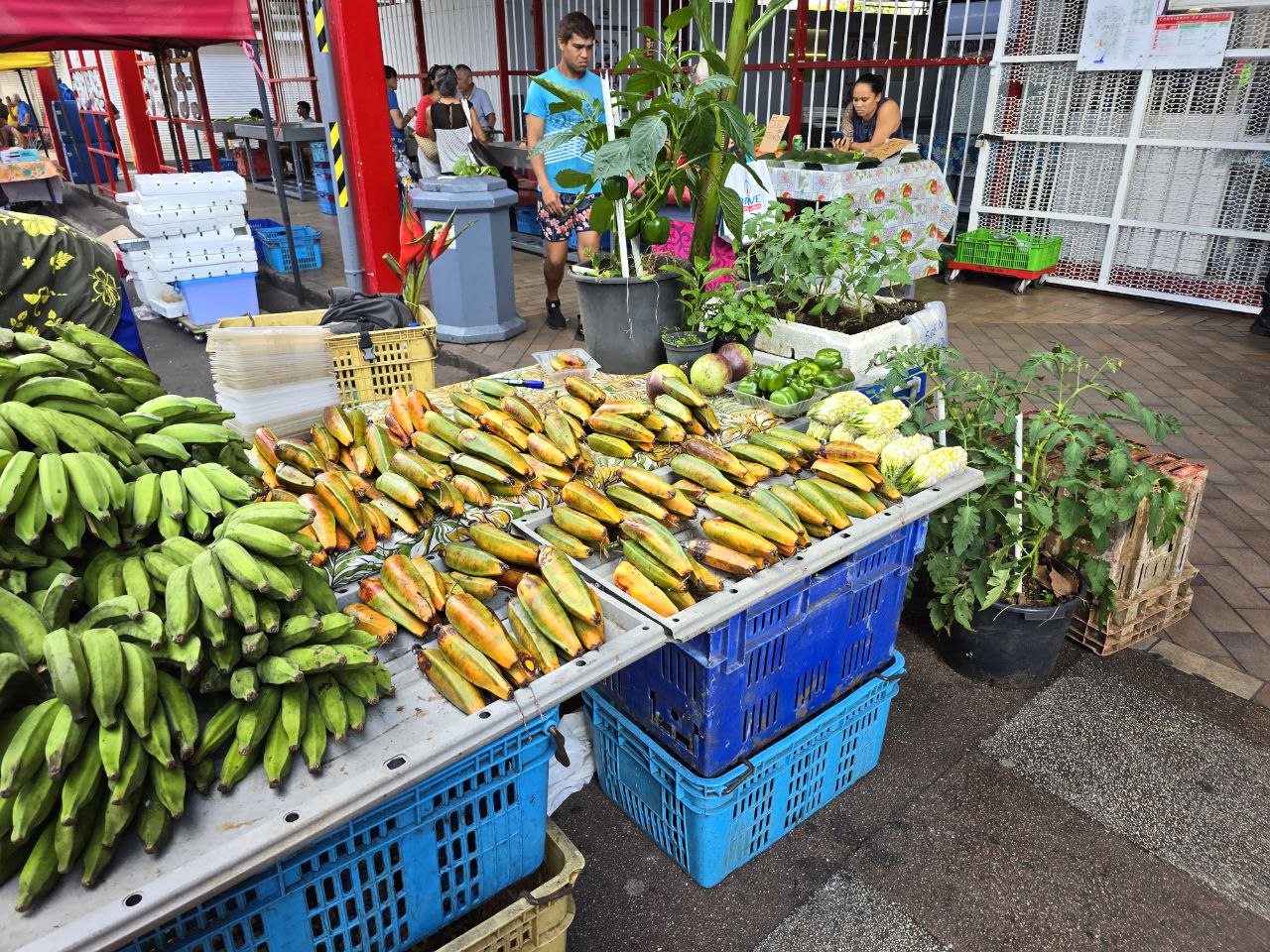

In Papeete, we always enjoy visiting the famous Sunday Marche and also enjoyed brunch at Urban Café. A hidden gem we discovered was Kaūa’a Tahiti coffee roasters, where we had the best coffee in the country and got to know the owner—it’s definitely off the beaten path but worth the trip.
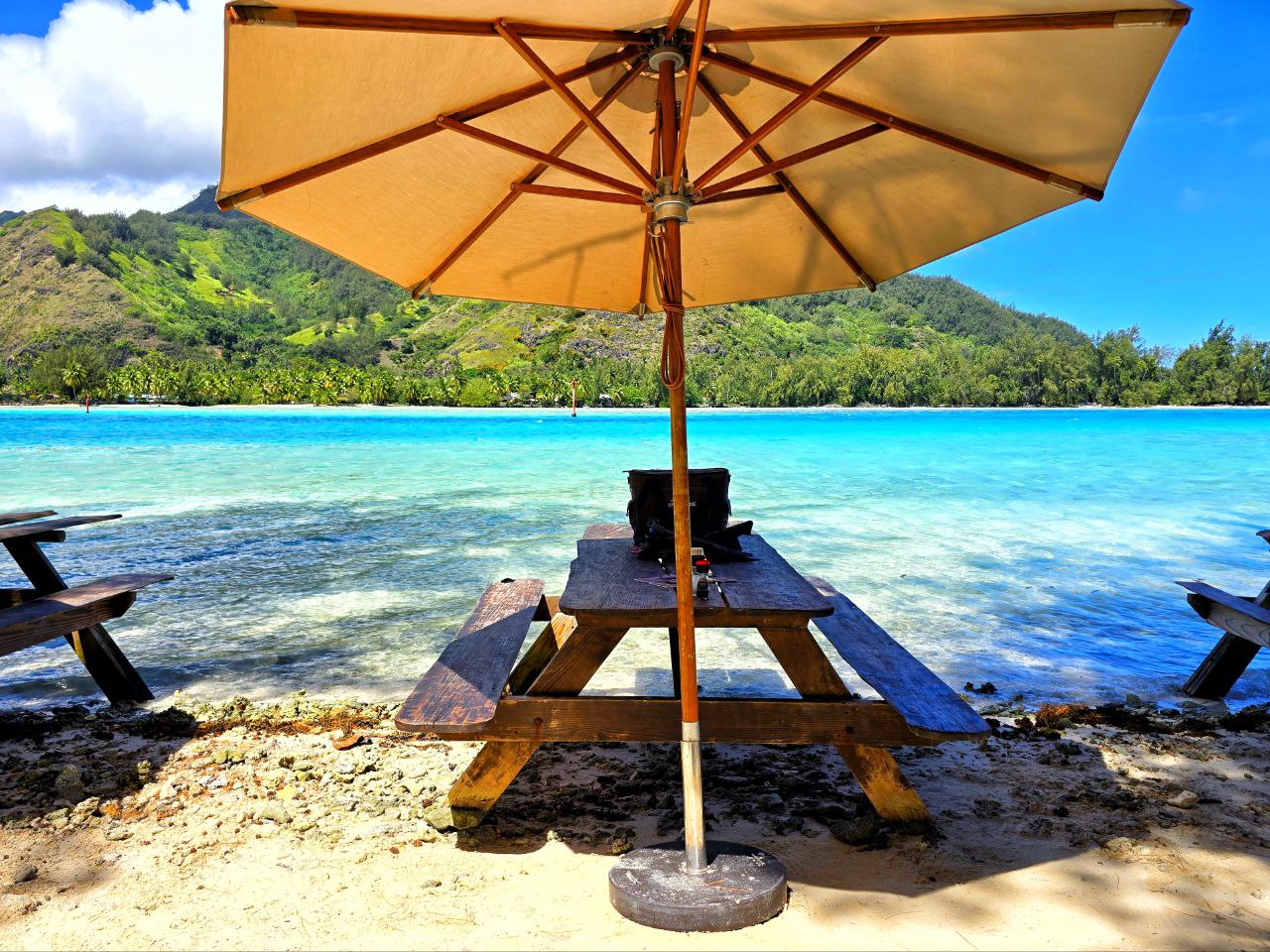

On Moorea, Temae Public Beach is easily one of the best beaches in the South Pacific, if not the world—truly breathtaking. We also enjoyed a fantastic and low-cost day at Coco Beach (pictured), located on an offshore motu, which included a private boat ride and a delicious lunch. For relaxation, we found Moo Janzu, a serene spot on the lagoon, offering excellent massages for just $80 per hour. Our snorkeling adventure was wild and memorable from Moorea Water Games. We also enjoyed dining at Rudy’s, a local restaurant that caters to English-speaking guests, and stopping at Carameline for French pastries. Our vacation rental was at Résidence Legend, a gated community of bungalows overlooking the closed InterContinental resort.
Please share your experiences of French Polynesia and any questions you may have. Is Tahiti on your bucket list?
Beat of Hawaii paid all expenses associated with the trip. All photos © Beat of Hawaii.
Get Breaking Hawaii Travel News



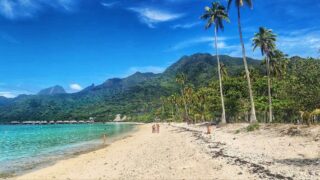

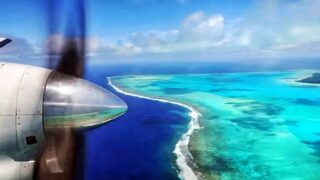

Love this! Thank you going to both!
Many friends too.
During covid-19 we were able to go to Tahiti and Moorea and found the people working at the resorts and the other locals that we met to be very friendly and broken. Considerably more so than Hawaii was at that time. I wasn’t intending to swim with sharks but the black tip reef sharks were there when we were feeding the rays and they were not aggressive at all.
He only downside of our trip was that we were all supposed to go to Bora Bora but the French government decided to shut down tourism at that point. The locals were not happy with the government in Paris but they helped us get the last plane out and we just spent a couple of extra days on Moorea.
Papeete Airport, in Tahiti is horrible. If Anyone Is Traveling and needs a luggage cart at the airport, please note that you will need a 200 CFP Franc Coin. That is IF you can locate a cart…heading into the airport it’s almost impossible. Heading out, they are locked up in the baggage area, thus needing the 200 CFP coin. I’m a scuba photographer so between scuba gear and photo gear I have 4 bags totaling 200 pounds to lug around. If you want a cab, it’s not impossible but beware if you’re traveling to the other islands via Ferry, getting picked up in Papeete to get back to the Airport may be a problem. IF you are wanting to utilize the Lounge in Papeete, NOTE: They require reservations if anything other than a “Business Class Ticket”. I have an AmEx Priority Pass but could not get in as I did not have a reservation and they were booked. BTW, they are only open 3 hours prior to boarding so if you have a long layover as I did, you might want to check into a neighboring hotel.
Nice review. As Hawaii becomes increasingly overcrowded and more expensive, there are plenty of choices. In the South Pacific, Fiji is also a welcome alternative, with world class snorkeling and scuba diving and incredibly friendly natives.
We’re Hawaii residents as well, and we spent a week on Moorea as an anniversary teip. My husband is a seasoned diver & loves to snorkel.
The snorkeling and diving were the highlights for sure. Completely incomparable to Hawaii. We particularly loved a day trip with Corallina Tours. Everything else was….fine. It certainly is not cheaper than Hawaii, the food isn’t better (we liked Caramelina as well), the locals are friendly and helpful, which is how I find my neighbors in Hawaii. The nightly smoke piles of folks burning their garbage and green waste bothered my asthma, which was disappointing. There was dog waste along the roadside walking paths. Strays don’t particularly bother me, but we had one incident of two dogs leaving their fenced yard to chase us up the road. After we were passed the property, they went home, but that was not a great feeling. I’m surprised to see a tip saying free shuttle service is easy to come by. That wasn’t our experience at all.
This is a good article. I have been to FP 4 times since 2019, and my experiences match well with those of the author of this article. FP isn’t “better” than Hawaii, although its diving is top notch (shark lover here). My biggest complaint about the two main islands of FP is that they are not pedestrian friendly. Tourism really is a secondary market there.
The quote near the beginning of the article should be remembered. Many of us look to Tahiti now in part because Hawaii seems to have lost its mojo (er . . . aloha). The insular attitude during the pandemic, the fights over Airbnb, the added fees for everything, the incompetent response to the Lahaina fire, the constant complaining about tourists by vocal locals . . . it all adds up.
Great review!
I absolutely Love Moorea. Headed back there in 2 weeks. Rudy’s is one of my favorite places to eat. We have stayed at 3 resorts there. And also a few Airbnb’s. Never was disappointed at any of the locations. I prefer FP over Hawaii. I love the polynesian people. We have never had an issue with the language. We do not speak French. This will be our 4th trip back. We are getting to spend 6 nights on Bora Bora this time! I am looking forward to visiting a new island.
There are significant climate differences between FP and Hawaii. Both are tropical with a dry season, trade wind pattern and in FP a South Pacific Convergence Zone driven wet season. However, the effects of topography are not as pronounced for most resorts in FP compared to Hawaii.
In July Papeete has about same amount of rain as Kona and in December it has about twice as much as Hilo.
We’ve traveled to French Polynesia 14 times and have traversed the Polynesian triangle from Tonga to Nuka Hiva (Marquesas). I would share one observation for those choosing to visit for the first time:
Cruise the various island groups by either the Paul Gauguin or the Aranui. The former is a rather pricey alternative, but comparable to a hotel on most islands and is all-inclusive (meaning alcohol, food and ship-to-shore transportation). The PG advertises itself as a “floating over-the-water bungalow”, and with the stellar crew, entertainment and on-board amenities, it exceeds that description. The Aranui cargo line offers a unique adventure in that the food aboard is fresh, local, and yummy. The accommodations aren’t as luxurious, but you’ll arrive at ports and see islands that you cannot visit any other way.
If you must choose one island, I would recommend Moorea. Stay overnight on Tahiti. Stock up at the Gran Marche on Monday and choose an Air BnB.
I would take tahiti any day over hi as you get a level of service that makes the 5 star hi restkrs seem like a motel 6. On bora u have a person that overseas ppl that take care of your every need. The smaller resorts have over water cabins, not as fancy as thosec in the high end hotels on the motus, but for like 1/5 of thier price but with excelent local and french food.
I stayed in ppt ppt at a airbnb and thise when out of thier way to make me feel athome even having me at thier party and dropping me off at ppt for return flight. All for around $100/night walking distence to ferry and downtown which is very nice unlike hnl
Had zero isshes with the ferry nir flights to other islands.
Lastly bora is the most beautiful place 8n the world never saw a shark no ray but seems to have friendky dogs.
Thanks for posting about your French Polynesia experience. I found it, and readers comments, very helpful as I think about the pros and cons of trying tropical vacation spots other than Hawaii. What I concluded – at least temporarily – is that I’d love to go to French Polynesia for one of our “adventure” trips – doing something very different. The snorkeling sounds amazing. But I love the familiarity of Hawaii – Maui and Kauai particularly – and love having a gorgeous vacation spot that feels like home, but is also so very different from home (we live in southern Arizona). Maybe we will try Tahiti out!
Your article on French Polynesia was good, but in summary, these islands are much more of an adventure than Hawaii. The key issues are an east coast level of humidity and bugs. The few nice hotels are just as expensive as Hawaii and the island’s infrastructure is more third world and can be selectively expensive as your article states.
Ironically, I’ve traveled the world and I still find that the food and Tahiti has been the best. And even the Chinese influence had me astounded after spending several years in San Francisco where I know good Chinese food! The people were welcoming and warming, and they love the idea that I was from Hawaii and considered their brother. We’re planning annual trips.
I share your views of Tahiti with a few additions. First, the humidity in Moorea borders on uncomfortable. This is not a wealthy place, like Hawaii. It is more “rural” than big city. The people are lovely. We got a 6 pack of beer at a local store and then tried to figure out how to open the bottles. A pickup drove up and kindly showed us how. On Sunday in Vanuatu we watched the local women going to church in their brightly colored dresses and big, floppy hats, with smiles as bright as the sun. Speaking of sun, Tahiti can be very hot. We had an over the water bungalow in Bora Bora, and I could not stay outside mid-day because of the heat.
Bora Bora is magnificent. The color of the water and the abundance of marine life in the lagoon are amazing. By all means, get a guide and explore/snorkel the lagoon. Our bungalow had a glass window in the floor so we could watch the fish swim below. We also had a small deck down to the water. Great once but prefer Hawaii.
It is such a shame that people say that Hawaii has priced itself out..Tahiti is beautiful, yes but is not cheaper than hawaii by far and limited in many ways..Having lived there, i know. Is a true shame that we have this present administration in charge making so many mistakes.. The hotels are now offering deep discounts because they are desperate and hotels are being built like mushrooms to make sure people do not have a choice to BnB..Truly tragic!!!
Great story, thanks. Please do more of these! I’m “almost” (not quite) done with Hawaii with high prices and lack of “Aloha” spirit … and am looking around. Mahalo!
Just came back from a week in Tahiti/Moorea. Such a great experience. May never return to Hawaii again is this is my new go-to.
A few caveats: Yes, I am an American that has travelled on a global basis for work. Yes, I do speak French. Yes, I can divide by 100 to figure out USD and Yes, I have lived in Hawaii and been there dozens of times. Also, I do have a US passport.
It is an island. Things are expensive – more so than USA. We grabbed a small rental car for about $55 a day. Used little gas – so reasonable. You really need a car in Moorea to get around.
The people are great. Tourists and locals are respectful, kind and helpful. It is a slower pace. You do not see as many tourist families coming there and the crowd [Hawaiians, French, and mainlanders] seem older. Maybe it was coming in September when the younger crowd are back in school and thus fewer young children.
We loved it! Going back again, soon. Totally worth it!
Our tips after 5 trips to Moorea. Aremiti ferry schedule is easy to find online, but Sundays and holidays have limited crossings. Make sure you reserve your taxi ahead for your Moorea arrival as they do not have a normal taxi stand. Grocery stores are closed by noon on Sundays and produce selections can be limited. Exchange currency before you leave the US to get a better rate. If you like to walk everywhere take a umbrella as sudden heavy downpours can come on quickly in their rainy season. Don’t expect beef to be the same as you get in the US, as their meat comes from New Zealand and Australia. Do not expect a party nightlife on Moorea. Relax and take in the absolute beauty of Tahiti and its people. We would live there if we could.
I agree with everything you said about Moorea. It is a great place to relax and enjoy nature – swimming [with whales, sharks and other sea-life]; hiking, listening to the waves, etc.
The people are so accommodating and there is a great vibe of cooperation and friendliness. No one seems to be in a big hurry.
Going back!
I visited Maui for the umpteenth time last November, and French Polynesia in December through early January. There’s no comparison.
French Polynesia all the way.
The food was wonderful, the people were friendly, and there was none of that anti-tourist vibe that Maui visitors are getting. Yes, it is VERY expensive, so save up. This is the longer flight that you pay for a premium cabin upgrade (United 787 Dreamliner SFO-PPT here! It was amazing!). It is a similar vibe to Hawaii in many ways. I didn’t find the language barrier to be too difficult, as I was/am learning basic French through Babbel, and most people working in the touristy industries speak English. Remember, a lot of French people know multiple languages, including English. The swimming and snorkeling is out of this world. There are few beaches, however, given the geographical make up of the islands.
Bottom line… I’m going back, and likely before returning to Hawaii.
We have been to many of the Tahitian islands over the years. They are all quite beautiful. Food is so-so and quite expensive. People complain about cost of food in Hawaii – HaHa. A lot of the resorts are older, the nicer new ones are quite expensive. Worth it if you got the money. Snorkeling is good, but much degraded from even 5 years ago, strong storms and other factors have hit Tahiti pretty hard. The people are very welcoming, language is not a problem. The airport is a total mess.
We have spent about two weeks in French Polynesia, on one trip, compared to 15 or so visits to Hawaii. We spent two days in Pape’ete and the rest of the time on Ra’iatea. By way of background we are a family of 4 from California. My French is currently at a B1 level and the rest of the family speaks English and Spanish. We stayed at a locally owned 3* hotel and used local guides for our lagoon tour, hikes and paddles.
Pape’ete was bustling, with busy public markets, big supermarkets and hospital, lots of people from Metropolitan France, the Hexagon, and mostly standard French spoken with me.
Ra’iatea was much quieter, with a sense of a slower pace, less tourist impact, lots of Tahitian spoken in public, and more slang and Tahitian mixed into spoken French. Our impressions were of a deeply Polynesian culture, with our hotel owners and other metro French well integrated into the local community.
We are going back to sail and see the Marquesas this summer.
Josh, the Marquesas are also on my to do list, perhaps as part of a Windstar cruise. I just love French Polynesia. Especially Raiatea and Moorea. The Papeete market is wonderful, isn’t it?
We just returned from a month in French Polynesia where we have visited multiple times over the last decade. Everyone has personal preferences and we prefer FP over Hawaii. FP Is more rustic plus we enjoy escaping Americana. I like visiting somewhere that does not have a Cheesecake Factory and a PF Chang’s etc. FP is more of an adventure. We live like locals by taking a condo for a month in Tahiti and shopping for groceries, making meals and joining a local sports club. This kind of travel is much less expensive than staying at hotels. We love Mo’orea and have visited half a dozen times. The intercontinental hotel that the author refers to is indeed below the Legends residences. However, it has been closed down for several years and is afflicted with asbestos. We will return to FP next year and hope to visit some locations beyond the typical Mo’orea and Bora Bora (which are both fantastic). Will try to visit Fakarava and Huahine. Beyond that I would like to get to the Cook Islands.
I’m from Hawaii and Tahiti hands down is more breathtaking though Tahiti proper is changing for the worse. Tradition, language and culture are vibrant unlike Hawaii where their culture is near extinction though there are pockets via schools that are trying to bring the Hawaiian language back. Hopefully the rest of Polynesia doesn’t choose the path of the 50th State.